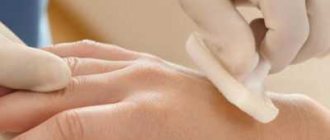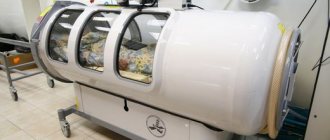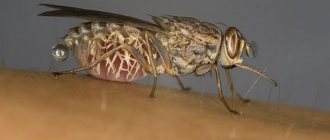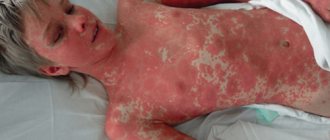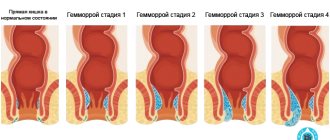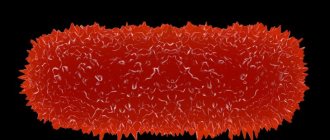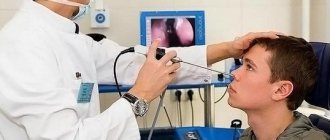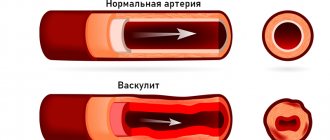Celiac disease
This disorder is accompanied by intolerance to gluten and products containing it. And one of the early signs of the disease is itchy clusters of blisters that often appear on the elbows, knees, buttocks and even the scalp. Moreover, often patients with these symptoms do not even feel any problems with the gastrointestinal tract and are very surprised when the doctor talks about possible celiac disease. But meanwhile, a gluten-free diet usually helps to cope with dermatitis.
Primary diagnosis of diseases
A competent, systematic examination of the body is the key to good health and well-being. That is why timely diagnosis of diseases is an important stage in treatment. It allows you to identify the slightest deviations from the norm already at the initial stages. This is facilitated by modern equipment and the latest technologies. All diagnostic methods are divided into primary and secondary. Most often, both are used in the process of examining a patient. The primary ones include:
- taking anamnesis;
- direct observation;
- conducting tests;
- studying patient complaints.
After the above manipulations have been carried out, the doctor will prescribe symptomatic treatment and secondary diagnostic methods. They are non-invasive, invasive and minimally invasive. The first include:
- laboratory tests;
- electrocardiography;
- radiography;
- CT scan;
- MRI.
Minimally invasive methods include, in particular, the following medical procedures: endoscopy, angioplasty, subcutaneous injection, laparoscopy, coronary angiography, positron emission tomography. The above manipulations are considered less traumatic for the patient than invasive ones. However, in some cases, penetration into the human body cannot be avoided. Then doctors prescribe:
- angiocardiography;
- aortography;
- puncture;
- biopsy.
According to doctors, it is known that several research methods are used very often. This comprehensive approach allows for the most reliable visualization of the diseased organ. In the future, this contributes to competent treatment and a speedy recovery.
Adrenal insufficiency
One of the important functions of the adrenal glands is to regulate the level of cortisol, a hormone that helps us cope with stress. If the adrenal glands do not cope with their work and do not produce enough of this hormone, Addison's disease may develop. Symptoms include muscle weakness and fatigue, weight loss and decreased appetite, low blood pressure and low blood sugar. The disease develops gradually and is very often diagnosed at quite late stages. One of the manifestations that can help to diagnose the disease in time is darkening of the skin, as well as the appearance of unexplained stretch marks on the skin. Be sure to consult a doctor if you notice something like this!
An application has been created that identifies a disease based on a photo. Among his fans is Apple CEO Tim Cook.
Credit: iStock
During a recent conference call with reporters and investors, Apple CEO Tim Cook talked about the VisualDx medical application. Business Insider talks about why this particular artificial intelligence application came to the attention of the corporation.
Apple has long been planning to enter the market of medical and health products. Although VisualDx is available to consumers in the Apple App Store, it is not intended for the general public. The application is aimed at certified doctors who will be able to use it to diagnose various diseases, including identifying diseases by skin condition.
This fall, the app added the ability to use the iPhone's camera and machine learning technology to determine skin conditions or narrow down the list of possible diagnoses. The solution allows you to identify diseases from photographs. Thus, VisualDx is able to provide a list of conditions that lead to the appearance of a rash.
Credit: VisualDX
In the future, some of these technologies will become available to the general consumer: users of such applications will be able to take a photo of their body and, after answering a series of questions, find out whether the problem requires medical intervention or whether it is an ordinary rash, VisualDx CEO Art Papier told the publication. The company is already developing a new version of the Aysa tool for common skin inflammations, he said.
Art Papier
head of VisualDx
“Consumers don’t want to play doctor. But if the situation happens on Saturday, then they need to know if they need to go to the aid station with their child or if it can wait until Monday when they can see their pediatrician.”
Papier explains that the app does not solve the problem of making a diagnosis, it is about training the system and triage. And for the next few years, VisualDx has no plans to tell customers that they're fine and don't need to see a doctor.
The reason Tim Cook mentioned VisualDx is Apple's CoreML library, which allows you to run machine learning algorithms on a mobile phone without having to upload photos to a server for processing. VisualDx's main clients are hospitals, which are against doctors sending photographs of patients to third parties.
Art Papier
head of VisualDx
“When Apple announced the launch of CoreML in June, we realized that the company allowed the models to be ported to the iPhone. Now the image is analyzed on the phone, but the picture never reaches the cloud. We never see him."
The program from VisualDx is capable of analyzing images in one second. The developers trained the models on images from medical practice: network users cannot upload the image to the company’s server and add any description they like to it. The company works with several universities and individual doctors. The VisualDx training database contains a library with 32 thousand photographs.
Credit: VisualDX
The VisualDx application allows doctors to confirm diagnoses. Users can search for diseases based on various symptoms based on patient information. Access to all of the company's databases costs $499, but a subscription to the application is usually issued by a medical institution. Doctors can add additional symptoms during the analysis and also view information about various diseases.
Credit: VisualDX
In October, it became known that the venture capital fund Gagarin Capital invested in two projects from Y Combinator, one of which is engaged in dermatological diagnostics on a mobile phone using artificial intelligence.
Subscribe to our channel on Telegram!
Weakness.
Dizziness, darkening of the eyes, mild headache, lethargy, drowsiness are natural reactions to successful conception. A pregnant woman gets tired faster, feels the need for daytime sleep, feels a loss of strength and low activity.
However, if these symptoms are too strong or are felt constantly, they may indicate low hemoglobin levels in the blood. This threatens termination of pregnancy with serious consequences, so an urgent consultation with a gynecologist will be necessary.
Illness and hospitalization
The presence of clinical symptoms of a respiratory disease, even with a confirmed test for coronavirus infection, is not a clear indication for hospitalization, experts clarify. Thus, the document states that the indication for hospitalization is a moderate or severe course of the disease with laboratory confirmation of coronavirus infection or suspicion of it. At the same time, the main indicator that doctors pay attention to when deciding on hospitalization is blood oxygen saturation.
“If saturation is more than 95%, there is no shortness of breath and low-grade fever, then it is quite possible to be treated at home if the doctor prescribes the correct treatment and monitors it. But if the saturation has decreased, then hospitalization is indicated, and for this there are clear criteria - a decrease in saturation of less than 95%,” noted the chief freelance phthisiatrician of the Russian Ministry of Health, Irina Vasilyeva. The second important criterion for hospitalization is a temperature above 38.5 degrees for three days in a row. In each case, the decision is made by the doctor, based on the severity of the course and risk factors for the development of complications.
Changing preferences.
The most obvious ones are taste. Typically, a woman begins to crave a specific food. More often - sour, spicy or sweet. Although there are often mixtures bordering on the absurd.
Appetite increases sharply or, conversely, decreases noticeably. Often there is a desire to eat something “out of season” - watermelon in the middle of winter, for example. Some people even want beer or cigarettes, even if they have not used them before.
Another sign is sensitivity to odors. You will suddenly no longer like your favorite perfume, but the smell at a gas station or new whitewash will become your favorite. During this period, a woman may well become interested in something new, change her tastes in music, books, films, and hobbies.
Zetlex.net
Coronavirus test “Temporary guidelines “Prevention, diagnosis and treatment of new coronavirus infection (COVID-19)””
1. The main type of biomaterial for laboratory research for infection caused by SARS-CoV-2 is +1) material obtained by taking a smear from the nasopharynx and/or oropharynx;
2) feces; 3) whole blood; 4) blood serum.
2. The main type of biomaterial for laboratory research for infection caused by SARS-CoV-2 is 1) nasopharyngeal aspirate; +2) material obtained by taking a smear from the nasopharynx and/or oropharynx;
3) blood serum; 4) feces; 5) sputum.
3. Currently, methods of specific prevention of COVID-19 1) are carried out within the expected incubation period (14 days) from the moment of last contact with the source of infection; +2) not developed;
3) involve the prescription of antiviral drugs; 4) involve the prescription of antibacterial drugs.
4. Currently, methods of specific prevention of COVID-19 1) involve the prescription of antiviral drugs; 2) are carried out within the expected incubation period (14 days) from the moment of last contact with the source of infection; 3) involve the prescription of antibacterial drugs; +4) are being developed, there are no drugs approved for use.
5. Mechanisms of transmission during infection caused by SARS-CoV-2 1) transmissible; +2) aspiration;
+3) contact; +4) fecal-oral.
6. The antipyretic drug of first choice is 1) acetylsalicylic acid; +2) paracetamol;
3) ibuprofen.
7. The first choice antipyretic drug for patients with COVID-19 is +1) paracetamol;
2) acetylsalicylic acid; 3) ibuprofen.
8. The main method of laboratory diagnosis of SARS-CoV-2 is 1) immunochromatographic; 2) virological; +3) amplification of nucleic acids (without accumulation of pathogen);
4) serological.
9. Current source of infection for infection caused by SARS-CoV-2 +1) people;
2) birds; 3) rodents.
10. Current source of COVID-19 infection +1) people;
2) rodents; 3) birds.
11. For etiotropic treatment of infection caused by SARS-CoV-2 in adults +1) there is no clear data on the effectiveness of etiotropic drugs;
2) the use of HIV protease inhibitors is effective; 3) the use of ribavirin is effective; 4) the use of chloroquine is effective.
12. A case of COVID-19 is considered confirmed if +1) a positive result of a laboratory test for the presence of SARS-CoV-2 RNA using nucleic acid amplification methods, regardless of clinical manifestations;
2) clinical manifestations of severe pneumonia; 3) the presence of acute respiratory distress syndrome.
13. Computed tomography of the chest is recommended 1) for screening on an outpatient basis; +2) for diagnosis, differential diagnosis and assessment of dynamic changes in inpatient conditions;
3) as a first-line test for inflammatory changes in the chest organs caused by viral etiology in outpatient and inpatient settings.
14. Study of arterial blood gases with determination of PaO2, PaCO2, pH, bicarbonates, lactate is recommended +1) patients with SpO2 less than 90% according to pulse oximetry;
2) patients with SpO2 within 90-95% according to pulse oximetry; 3) all patients with a confirmed diagnosis of COVID-19.
15. Methods used to evaluate patients with suspected/known COVID-19 pneumonia are +1) computed tomography;
2) linear tomography;
3) fluoroscopy; +4) radiography.
16. Recommendations for the etiotropic treatment of infection caused by SARS-CoV-2 in adults 1) the use of chloroquine is effective; 2) the use of ribavirin is effective; 3) the use of HIV protease inhibitors is effective; +4) permissible by decision of the medical commission in the prescribed manner;
+5) there are no clear conclusions about the effectiveness or ineffectiveness of etiotropic drugs.
17. A patient’s case of COVID-19 is considered confirmed if +1) a positive result of a laboratory test for the presence of SARS-CoV-2 RNA using nucleic acid amplification methods, regardless of clinical manifestations;
2) the presence of epidemiological signs of contact with a patient with COVID-19, an acute course of a respiratory disease with signs of the development of pneumonia, regardless of the possibility of performing PCR; 3) the presence of clinical manifestations of acute respiratory disease and a positive result of a laboratory test for the presence of SARS-CoV-1 RNA using PCR; 4) the presence of close contacts over the past 14 days with a person who has a laboratory confirmed diagnosis of COVID-19, and manifestations of an acute respiratory infection with a feeling of chest congestion.
+1) biopsy or autopsy material of the lungs
can be used as additional material for laboratory testing for COVID-19 infection +2) whole blood; +3) bronchoalveolar lavage;
4) material obtained by collecting a smear from the nasopharynx and/or oropharynx;
+5) nasopharyngeal aspirate +6) sputum.
19. The main method of laboratory diagnosis of COVID-19 is 1) serological; 2) virological; +3) amplification of nucleic acids (without accumulation of pathogen);
4) immunochromatographic.
20. For patients with COVID-19, computed tomography of the chest organs is recommended +1) for diagnosis, differential diagnosis and assessment of dynamic changes in an inpatient setting;
2) for screening in outpatient settings; 3) as a first-line test for inflammatory changes in the chest organs caused by viral etiology in outpatient and inpatient settings.
How to treat
Most drugs used to treat coronavirus infection are used off-label. This means that the drug was originally registered for the treatment of another disease, but there is reason to believe that it may be effective in treating COVID-19. The exception is favipiravir, the first drug registered in the Russian Federation for the treatment of coronavirus infection. However, the guidelines note that it cannot be used in children.
In addition, the use of antimalarial drugs to treat patients with coronavirus infection causes a lot of controversy in the global medical community. Earlier in May, the authoritative journal The Lancet published a review based on data from more than 9 thousand patients in whom this drug was used.
The findings suggested that hydroxychloroquine may be associated with higher mortality in the group of those who used it, compared with a control group in which patients did not take the drug. The World Health Organization (WHO) announced the suspension of research into hydroxychloroquine for the treatment of coronavirus. Experts from the Russian Ministry of Health in the new version of the methodological recommendations have significantly narrowed the indications for prescribing this drug.
“Today, it should be noted that a significant array of published results from foreign studies, as well as domestic experience, still indicate the validity of the use of hydroxychloroquine when prescribed in certain groups of patients with COVID 19 in low doses, which are less associated with heart rhythm disturbances,” - the document says.
The updated document indicates that 14 drugs can be used to treat coronavirus infection.


